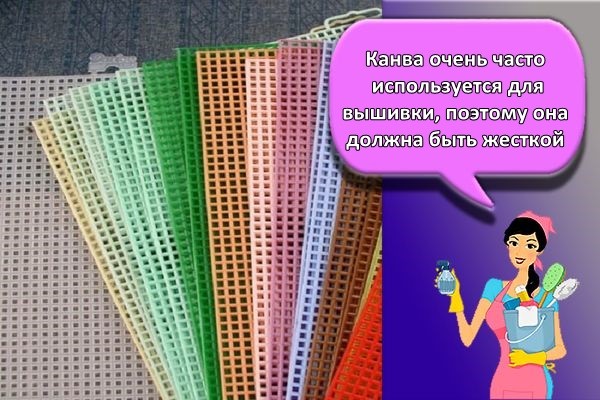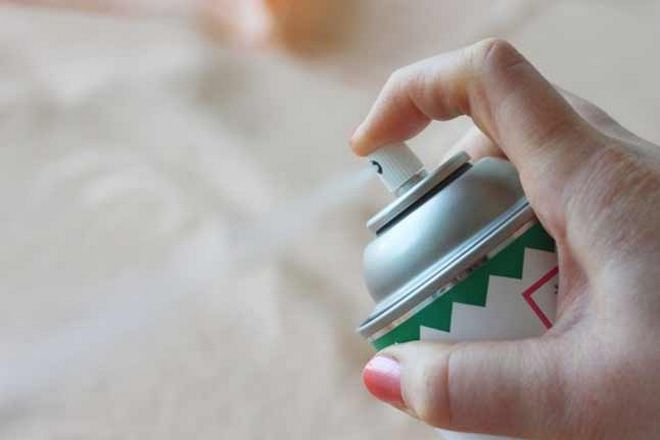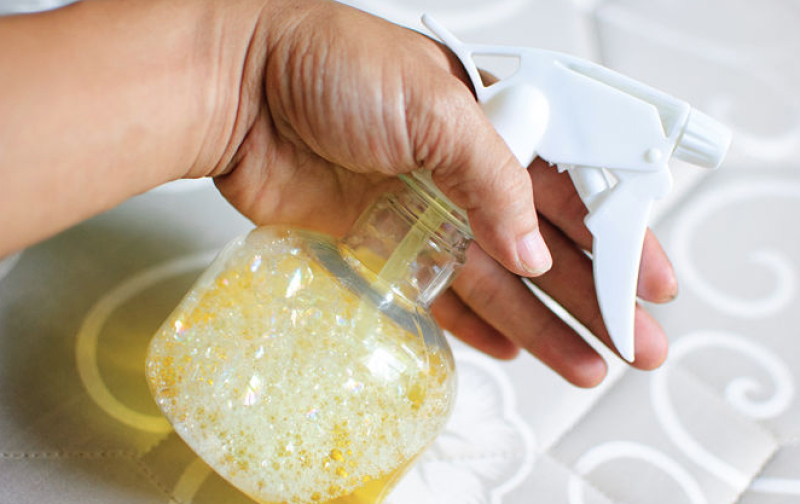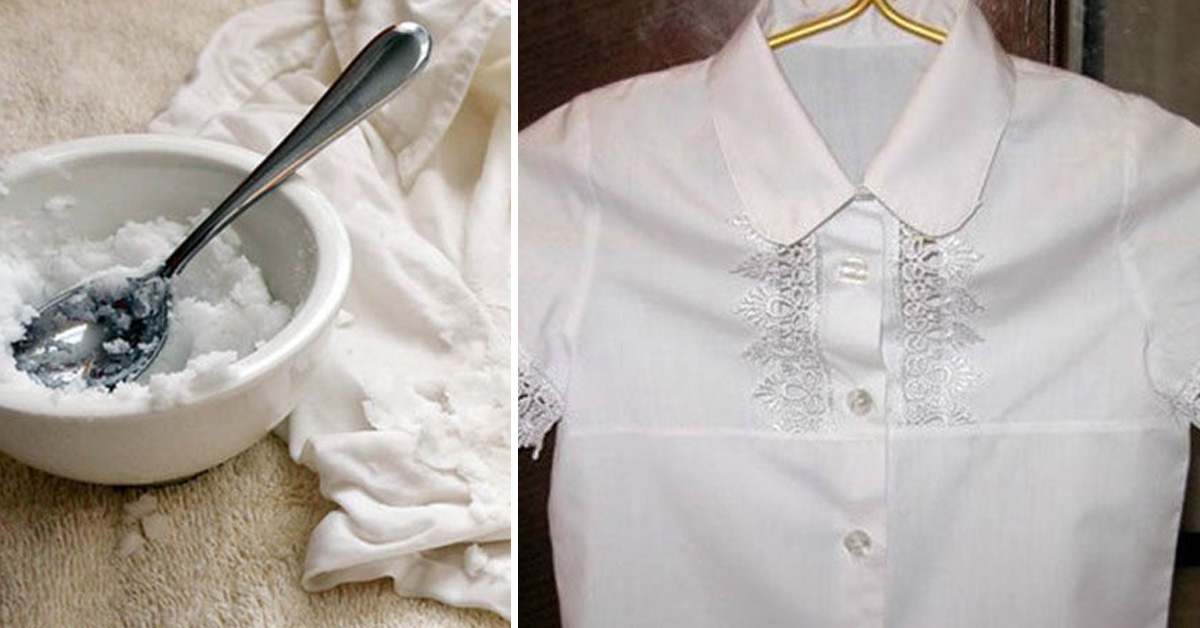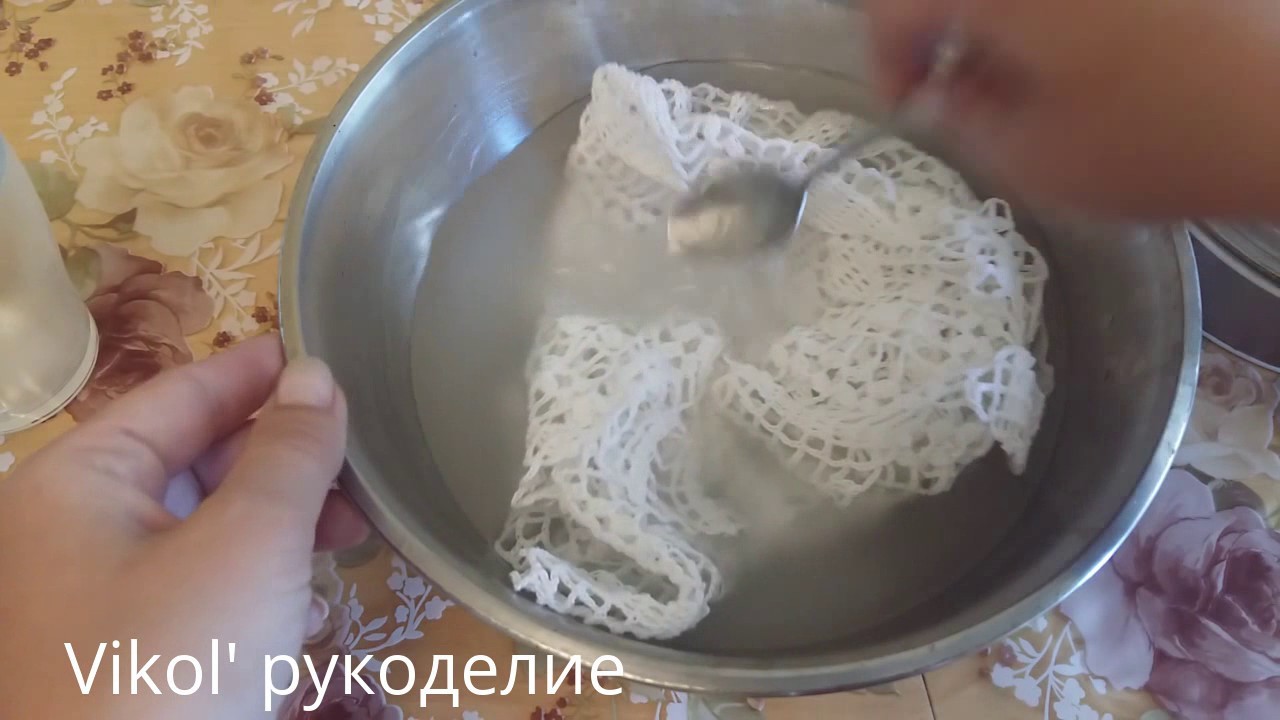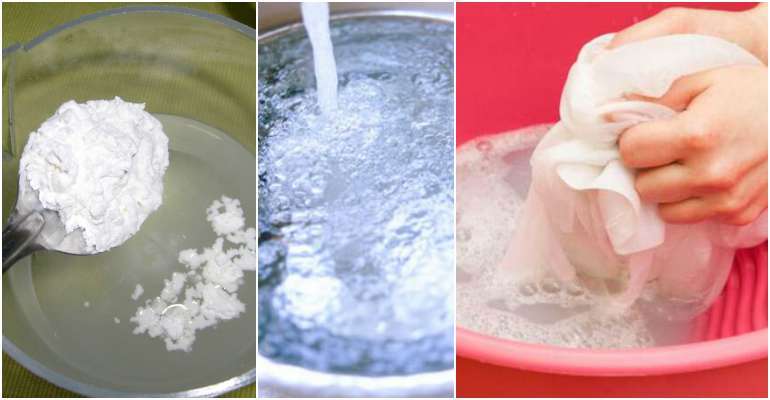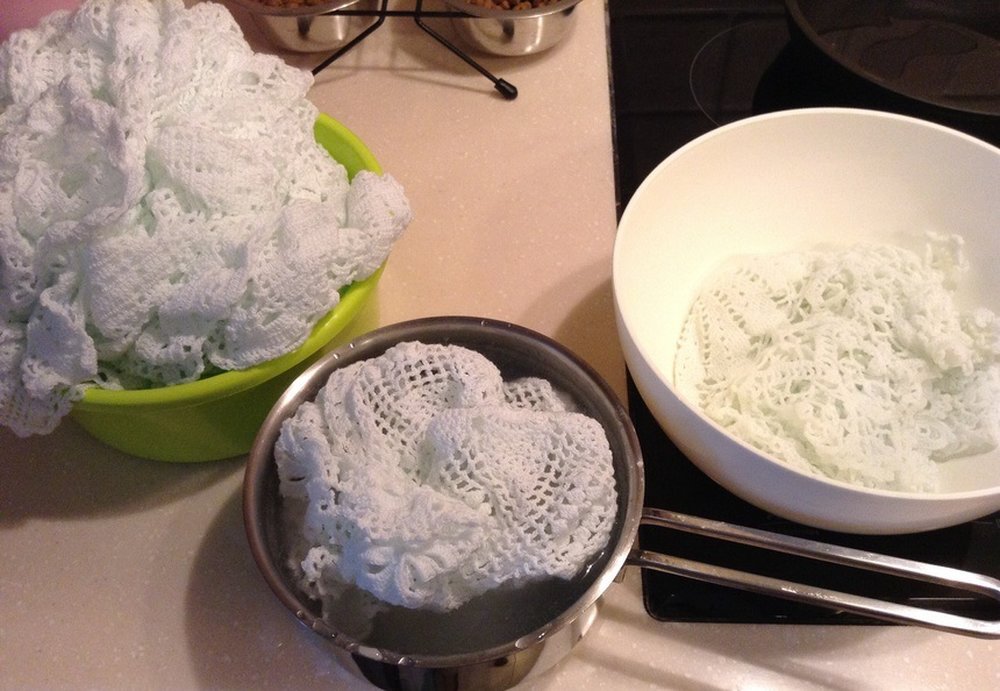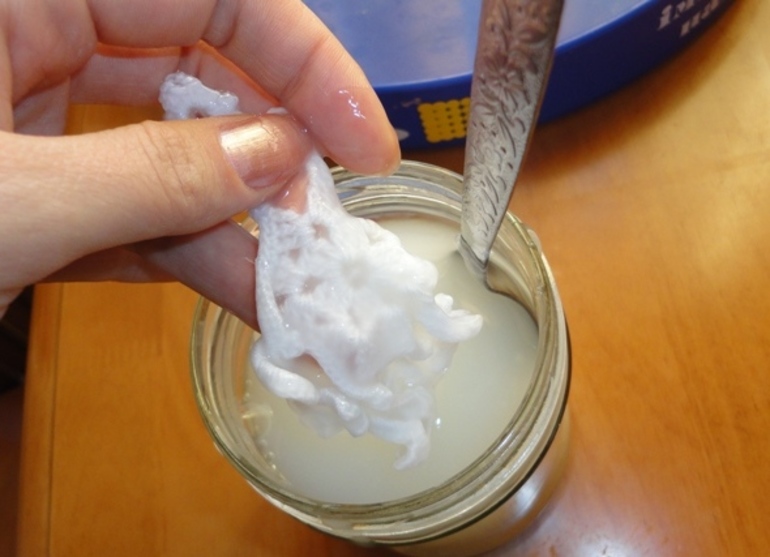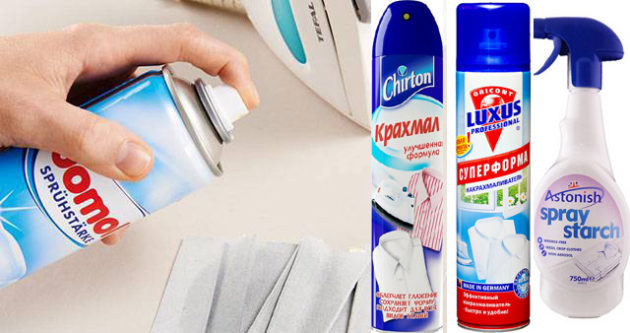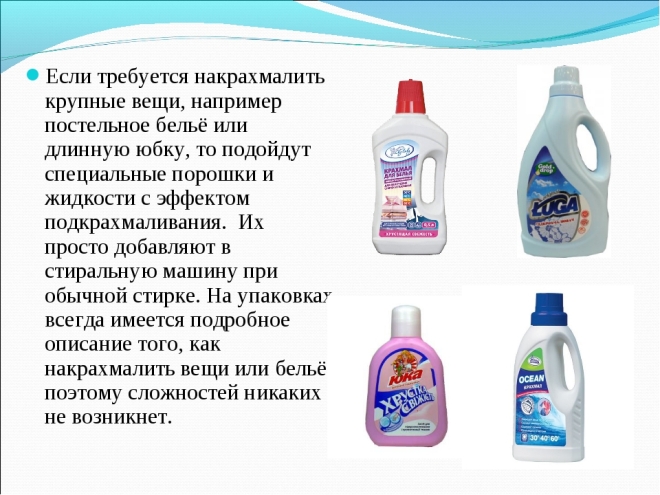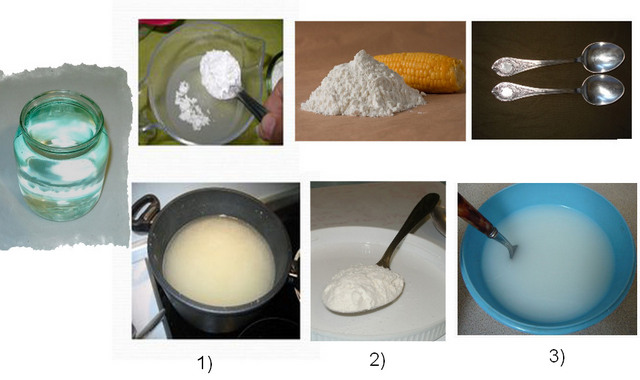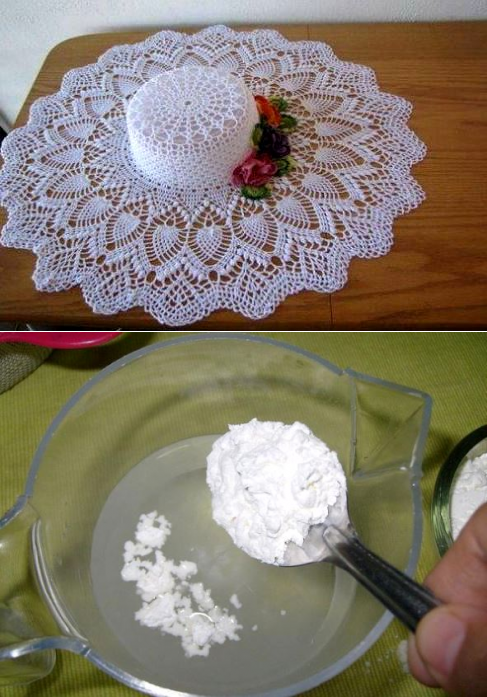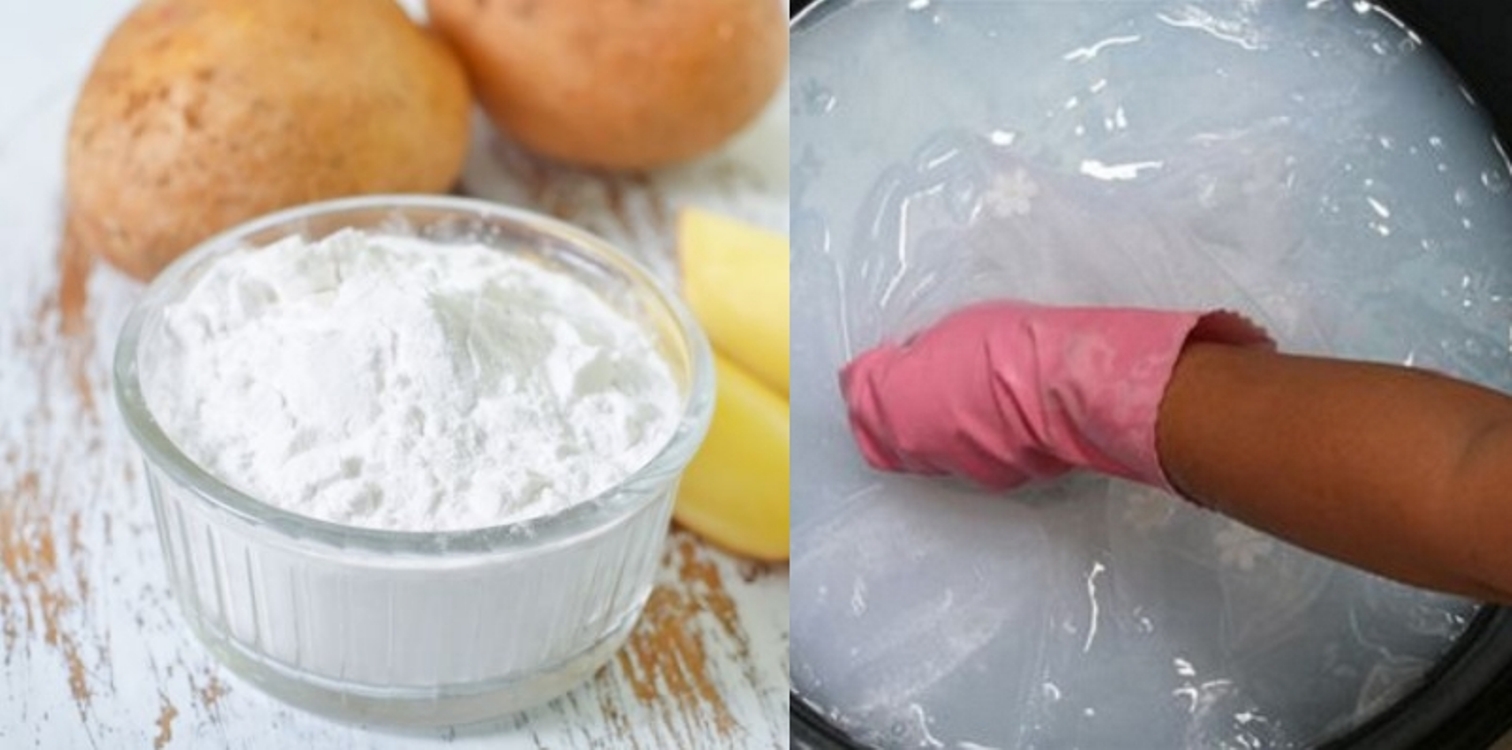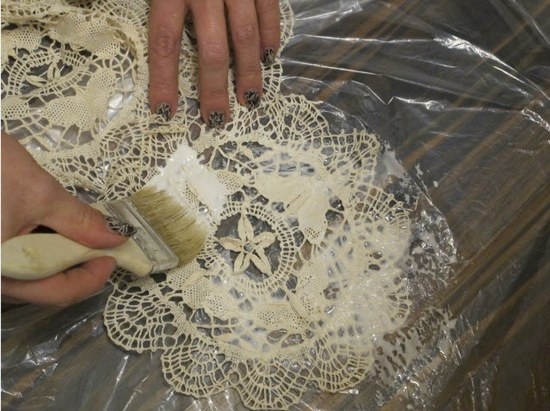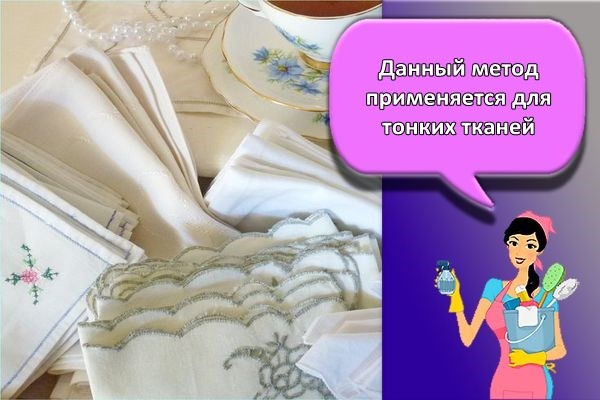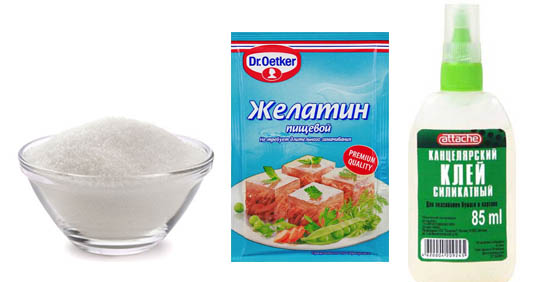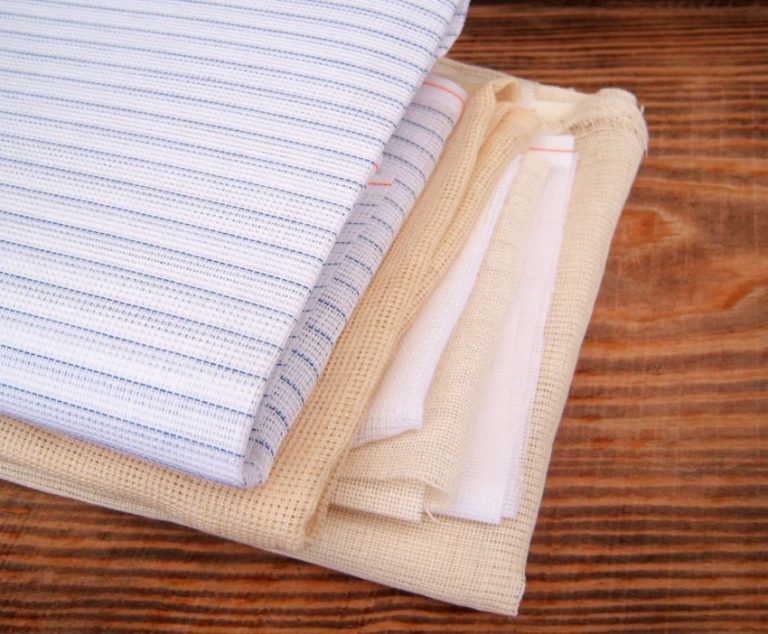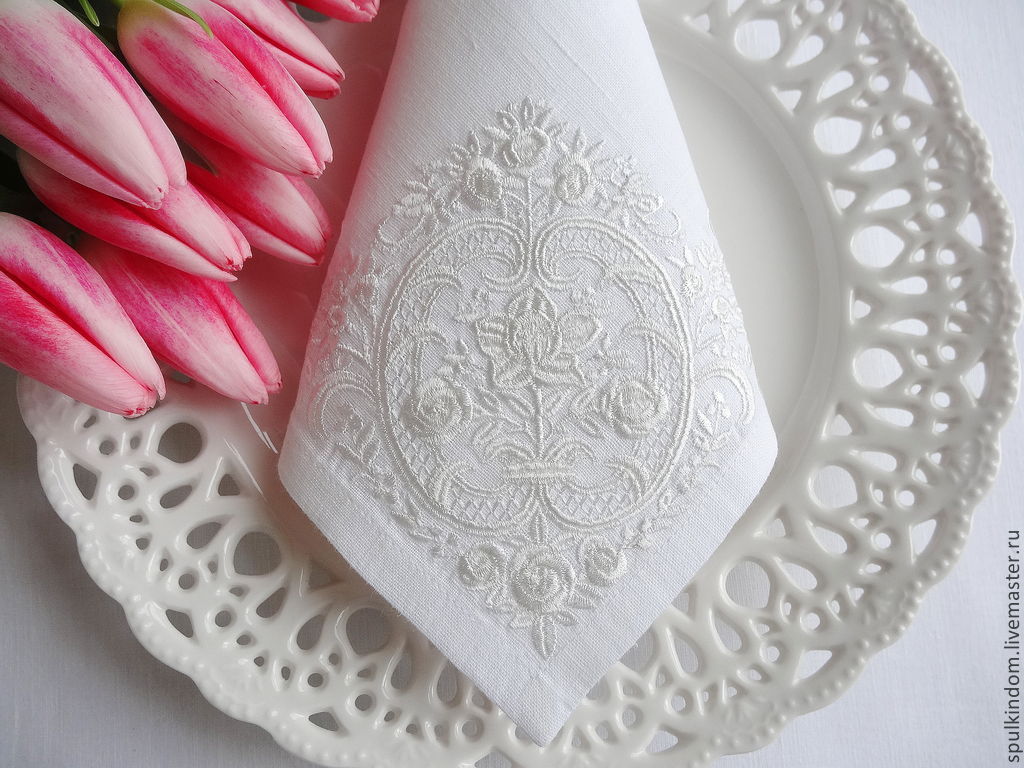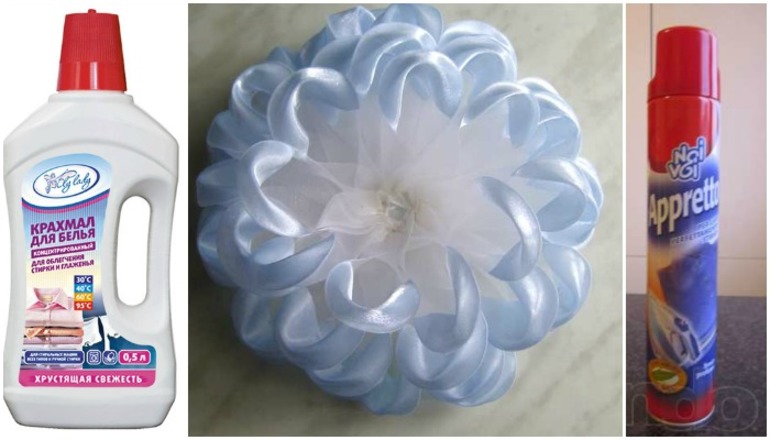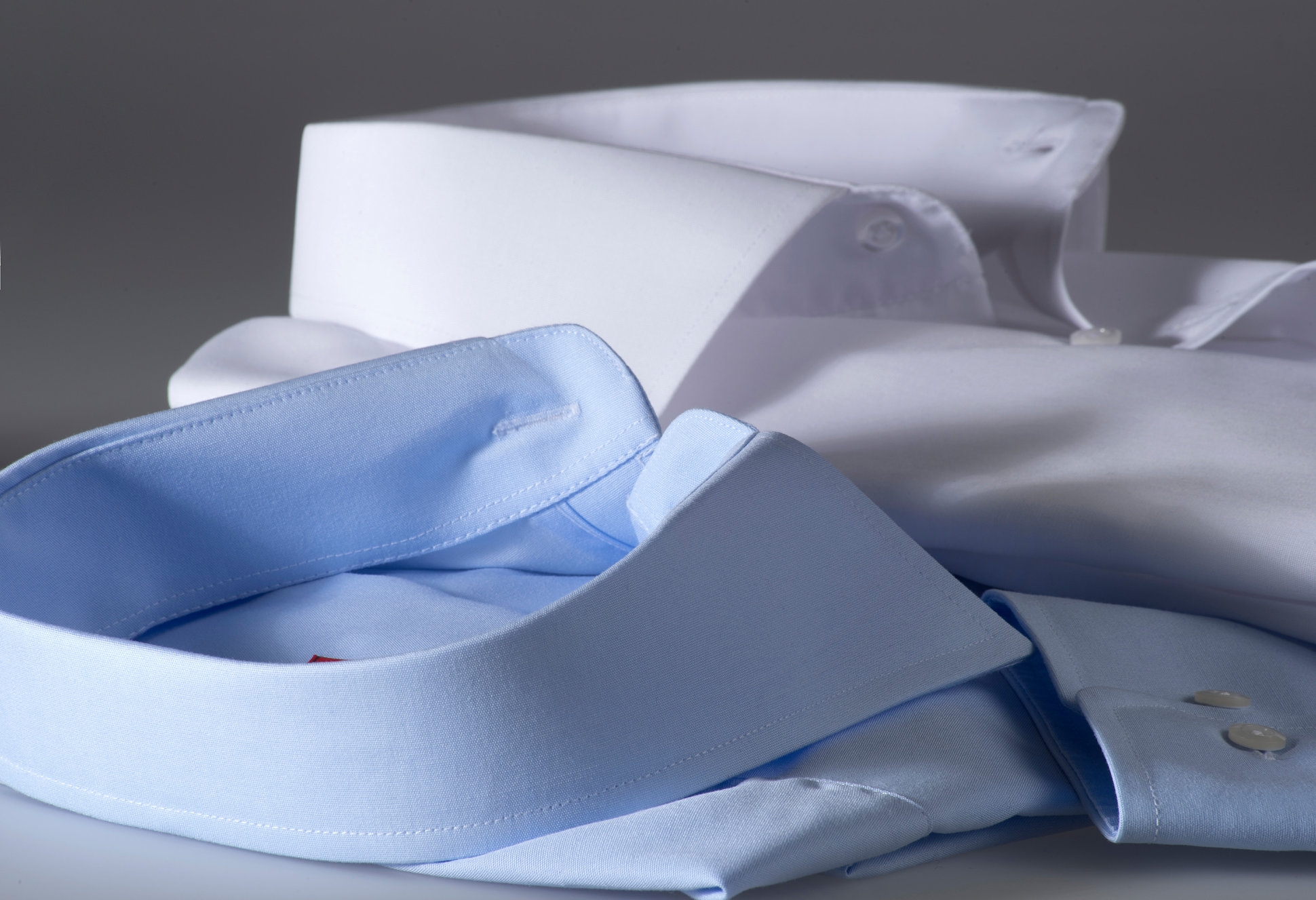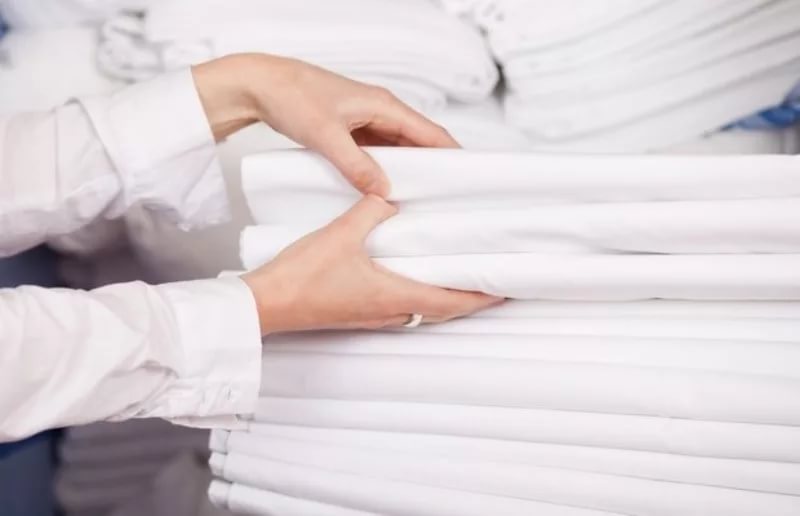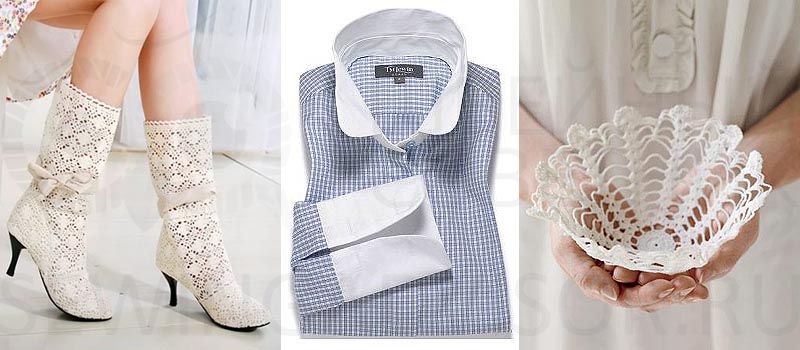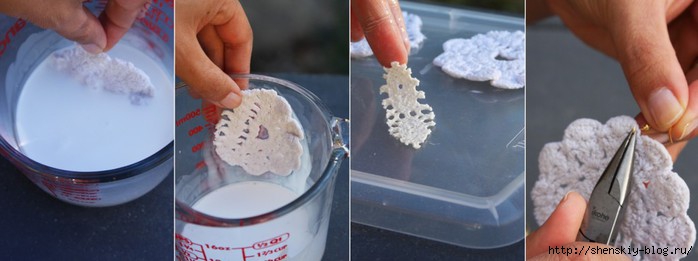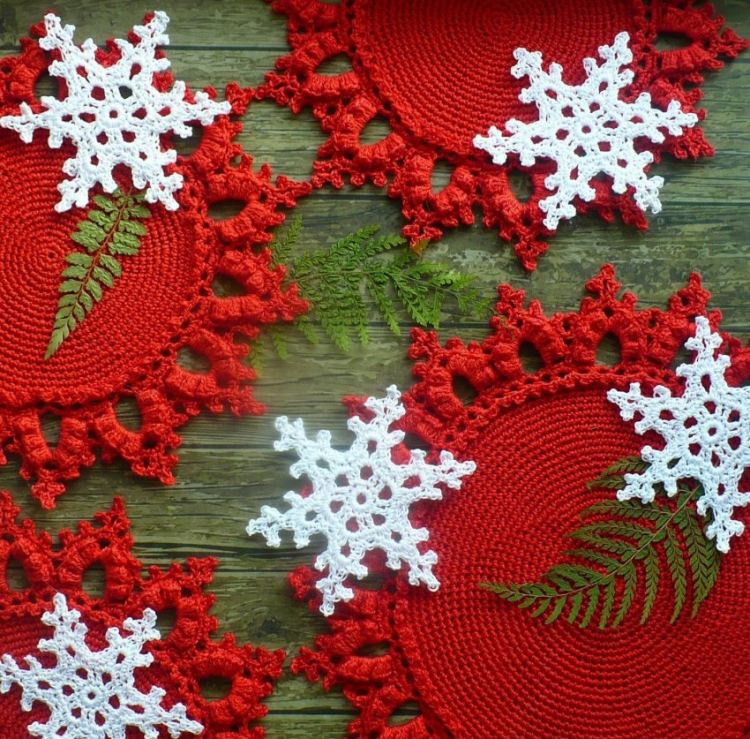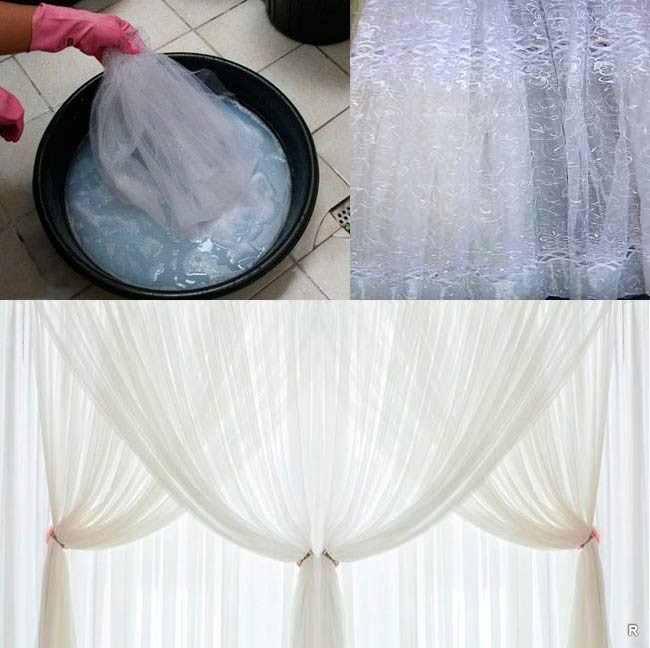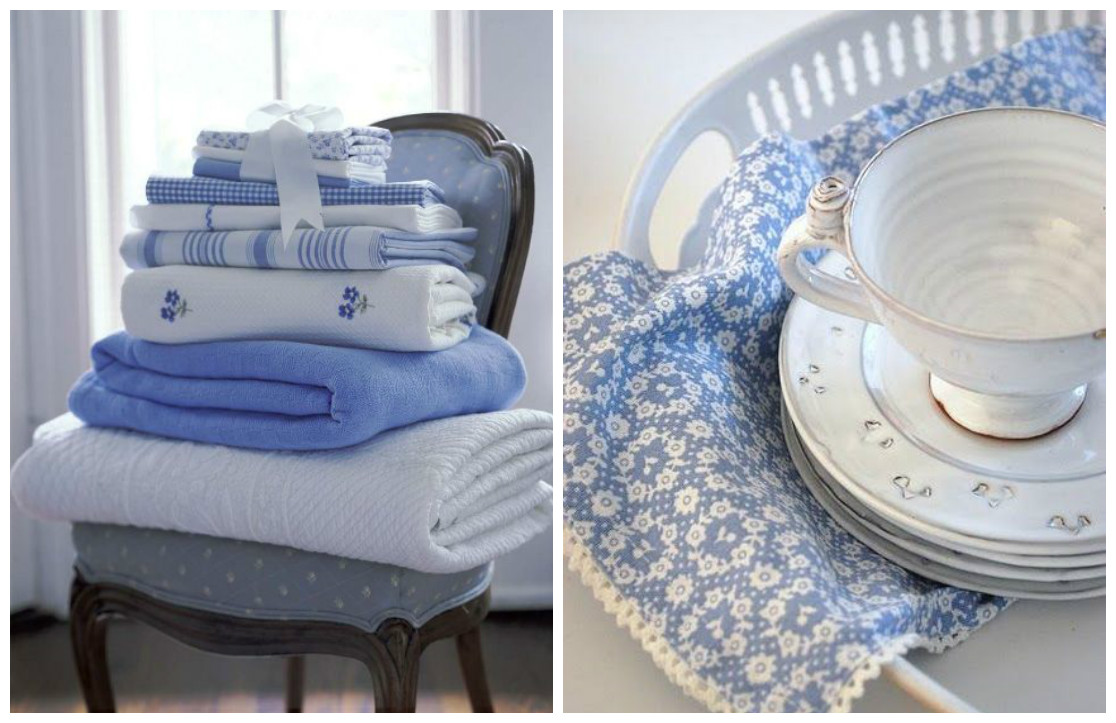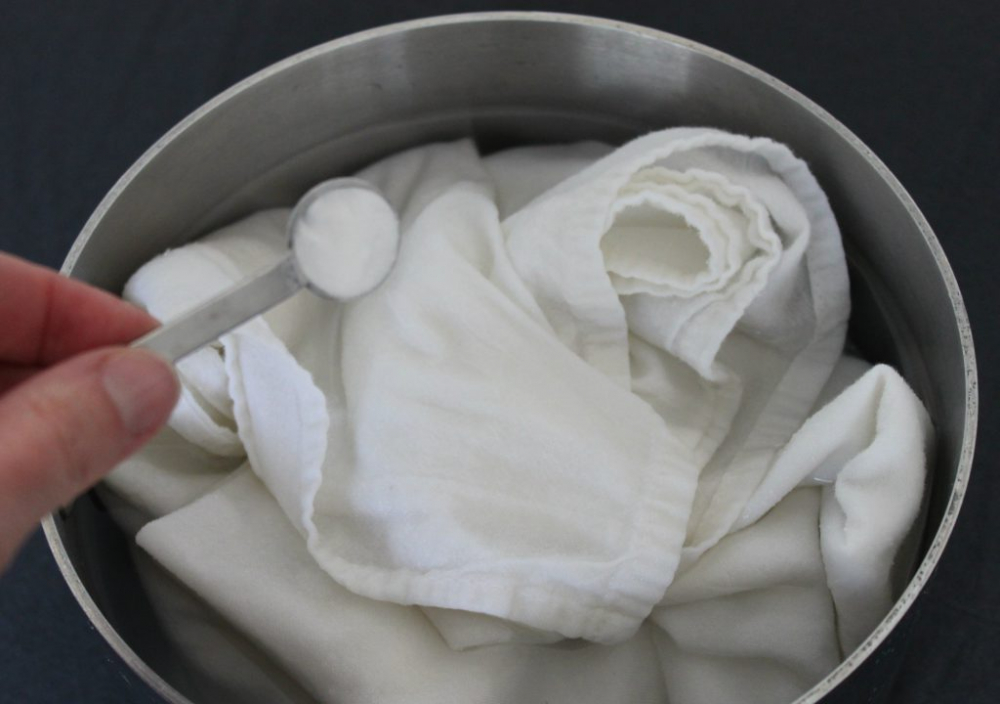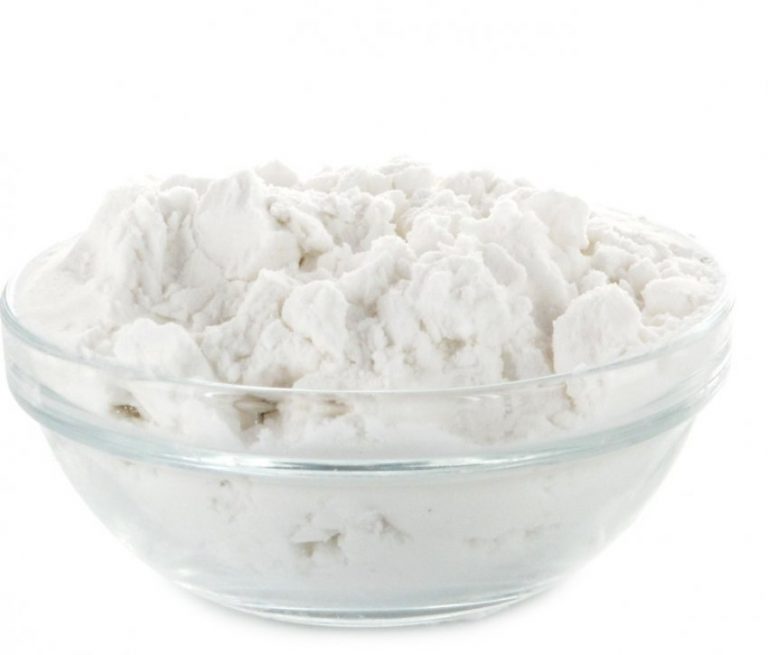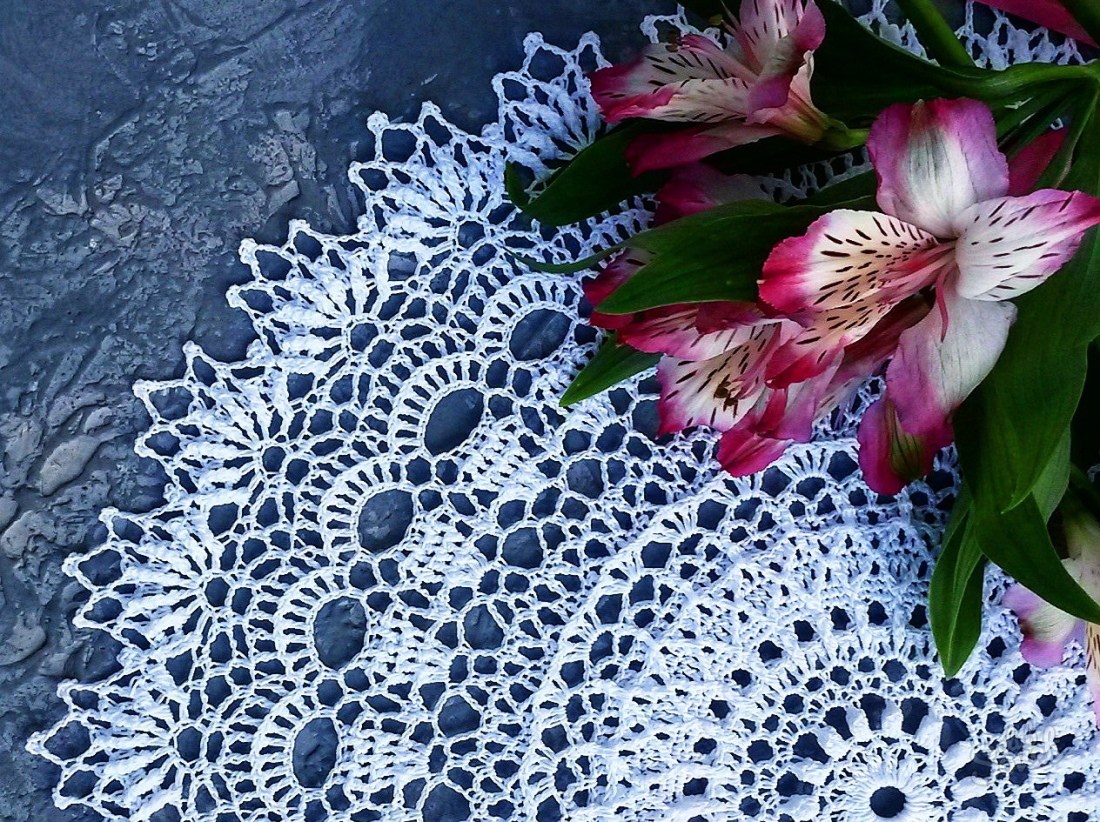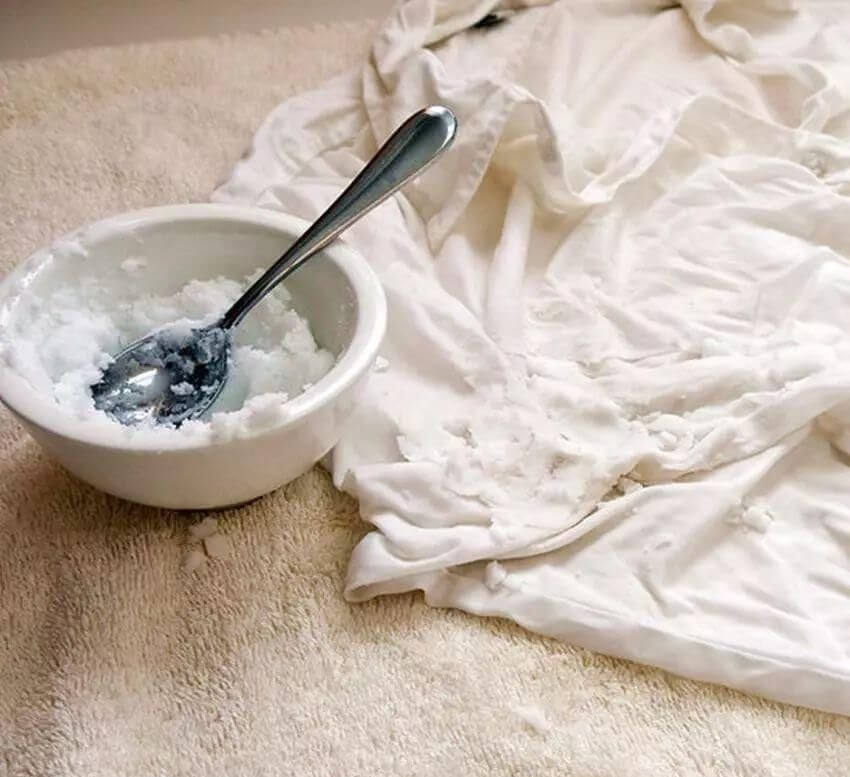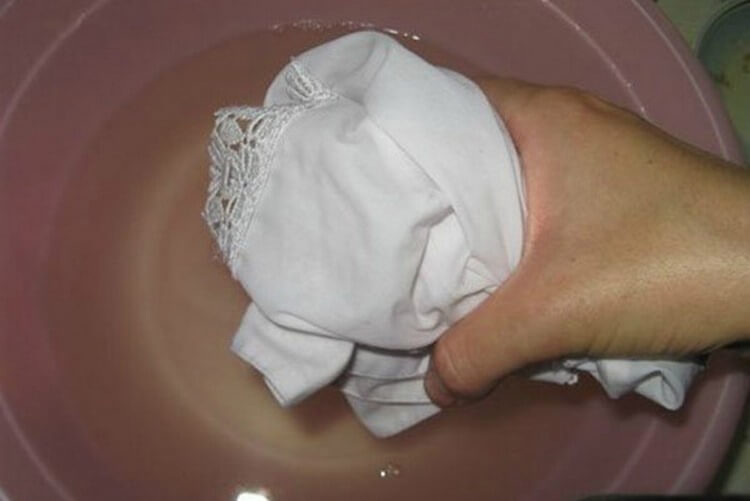How can you starch the fabric
In hypermarkets, you can buy special sprays, solutions and powders for use in an automatic washing machine. These tools are very easy to use. The aerosol can must be shaken and sprayed onto the fabric, ironed with a hot iron.
Large items, such as sheets and duvet covers, are best starchy in the washing machine using a special powder mixture or solution.
How to properly starch fabric in a washing machine - you can find out about this by reading the instructions for the product.
Any housewife knows that the fabric can be starchy. It is better to do this with potato (it is easier to buy it), but you can use corn or rice. You can starch any thing with starch, be it a sheet or a napkin.
There are other methods of starching, suitable only for openwork decor. These include starching with sugar, gelatin and PVA glue.
The traditional way at home
Before you start starching, you need to familiarize yourself with the features of the procedure at home.
Views
There are three main types of clothing processing.
Soft
It is recommended to use this method if it is necessary to process dresses made of thin materials. In this case, use a small amount of starch powder. It is enough to add one and a half tablespoons of the substance to a liter of water. Gentle starching works well for knitted fabrics.
Medium hardness
The average intensity of starching is not suitable for all things. Experts advise using this method when working with napkins, tablecloths and bedding. You can also do the processing of skirts, sweaters and durable shirts. For evening dresses, this technique is completely inappropriate, as it can harm the fabric material.
Hard
The harsh method is not used very often because it is not suitable for all things. People who regularly starch are advised to use it when processing shirt cuffs or collars. Sometimes skirts and dresses made of durable fabric are processed in this way. Starching the garment harshly is necessary to shape it.
Preparation of the solution
To independently prepare a solution for starching things, you need:
- add 90 grams of starch to 500 milliliters of water;
- boil 400 milliliters of liquid and add it to the starch mixture;
- the resulting solution is thoroughly stirred and re-boiled on the stove for half an hour;
- the liquid is poured into a separate bowl and infused until it cools.
Recipe improvement options
There are four ways to improve the recipe for creating a starch mixture.
For whiteness
Some housewives starch evening dresses for whiteness. In this case, the solution will have to be prepared according to a standard recipe. However, a little blue is added to the resulting mixture, which helps to get rid of dirt and stains on the fabric surface.
To shine
A special recipe for shine will help give things freshness and make them more attractive. To prepare the paste, the starch is mixed with talc and water. After that, a napkin is dipped into a container with liquid, through which a woman's dress will be ironed. The shine left on the fabric after ironing will not disappear even after washing.
For easy ironing
Sometimes starching is carried out so that the dresses are less wrinkled and better ironed. To remove bruises, starch liquids are used, in the manufacture of which not only water was added, but also milk.No more than 60-80 milliliters of milk dissolves in a liter of water.
To keep the color
It's no secret that colored items are washed out over time, and their color becomes less bright. To make bright dresses always look beautiful, you need to use a special tool.
Handling the thing
It is quite simple to treat clothes with starch solutions. For this, the dress is placed on an ironing board or any other flat surface. Then the cloth is moistened in liquid and the surface of the dress is treated with it.
Examples of using
The area of application of the starch solution can be varied. However, the procedure is more commonly used for the following items.
Linens
Correctly starched bedding has an attractive appearance, does not wrinkle and is pleasant to the body. To starch your laundry, you can add the solution directly to the washing machine during washing. For bed linen, a medium consistency of the solution is used.
Tulle
Using a starchy solution, you can freshen the curtains and give them the desired shape. For such purposes, a soft solution is prepared: 1 spoon per 1 liter of water, the curtains are rinsed for 5 minutes and ironed wet.
Shirt
A starched shirt looks better on the wearer. For this, a solution of medium consistency is used, the washed shirt is placed in the solution and left for 15 minutes. Then it is squeezed out of excess water, dried and ironed wet.
Tablecloth
A concentrated solution must be used for the tablecloth. The fabric is placed in liquid and left for 2 hours, after which it is dried and ironed. The fabric treated with a solution takes the required shape and looks elegant.
How to properly starch things
Before proceeding directly to the main process, the textiles must be washed and rinsed well. The procedure for starching is as follows:
- Place a clean, damp or dry cloth in a warm solution with a certain concentration of starch.
- Let the mixture spread between all the folds of the fabric.
- The residence time of the tissue in the basin is determined by its density and the desired effect. The denser the material and the more rigid you want to make it, the longer you need to hold it. For silk clothes, 1-2 minutes is enough. Cotton fabric can be held longer - 10-15 minutes.
- Take the thing out of the basin, squeeze it gently and send it onto the rope to dry, straightening it well. When the fabric is dry but slightly damp, iron it with a warm iron.
Any kind of starch is suitable for the preparation of a starch solution. Most housewives prefer potato, because it is easy to find it and it costs nothing at all.
The concentration of the solution is determined by your goals, as well as the type of fabric from which the items are made. There are such methods: soft, semi-hard, hard. Each method has its own characteristics and is suitable for certain purposes, which I will discuss below.
The gentle way
This method is used in order to give elasticity to things without making the material hard to the touch. This method is great for items made of silk, cotton, chiffon, cambric. As a rule, bed linen, dresses, blouses, shirts, tulle, etc. are subjected to soft processing.
How to prepare a mild starch solution:
- You will need 1 teaspoon of starch per liter of water.
- First, mix it with 200 ml of cold water. Stir well to avoid any lumps in the mixture.
- Boil the remaining 800 ml of water.
- Pour the prepared cold mixture into boiling water, stirring constantly.
- Turn off the heat, let the solution cool.
As a result, you should get a homogeneous liquid, a bit like jelly. I did something similar when I was “composing” finger paints for my son.
Still, lumps formed? Filter the solution through cheesecloth or a sieve.Do not be too lazy to do this, as these lumps may not in the best way affect the end result of starching.
Semi-rigid way
Want to quickly tidy up furniture covers, curtains, tablecloths, napkins or lace on your clothes? Feel free to use semi-rigid treatment.
The mixture required for this procedure is prepared in the same way as a soft solution. The only difference here is that you need 1 tablespoon of starch per liter of water. Increasing the concentration will also make the mixture a little thicker. However, if it turns out to be too thick, you can dilute it with a little lukewarm water.
Hard
What kind of things are usually tough to handle? These are all kinds of decorative textile items, petticoats, tutus, knitted boots, cuffs, collars, knitted bags, etc. That is, those items that need to be processed in such a way that they stand and do not lose their shape.
You can use our previous recipes to prepare the mixture required for tough processing. But in this case, we will increase the concentration of starch to 2-5 tablespoons per 1 liter of water.
For this purpose, you can prepare a slightly different solution:
- Dissolve 50 g of starch in 200 ml of cold water.
- Next, dissolve 1 teaspoon of borax (aka sodium boric salt) in 200 ml of hot water. Wait for the liquid to cool down and proceed to the next step.
- Boil 600 ml of water. With constant, slow stirring, pour in the starch solution.
- Now add the borax solution to the resulting mixture.
- The solution can be used after 2 hours, but in the meantime you have time to prepare clothes or do other household chores.
How to prepare the solution?
You can process starch not only completely a thing, but also its individual parts - collars, cuffs, a skirt or a petticoat. For this, potato, corn and rice starch mixed with plain water are suitable.
Starch treatment is carried out after the obligatory washing of the product and removing stains. According to the degree of hardness, the solution can be:
- soft - for thin, delicate fabrics;
- medium - for cotton, linen products, mainly for bed linen;
- rigid - for persistently maintaining the shape of the dress, underskirt, ballet tutu, cuffs.
Depending on the fabric and the desired degree of hardness, a starch solution is diluted. How to starch a dress will be discussed in detailed step-by-step instructions.
- Starch in the required amount is poured into a container and diluted with cold water in an amount of 150-200 milliliters.
- The mixture is thoroughly mixed to remove lumps.
- The remaining water is boiled and the starch solution is poured into it.
- With stirring, the composition becomes homogeneous, after which the container is removed from the heat.
- After cooling, the item is lowered into a solution of room temperature for 5-10 minutes, making sure that the liquid gets in and soaks all the folds.
- The product is taken out and hung to dry separately from other things, after making sure that there are no creases and folds.
The updated dress needs ironing. Most often, individual details of outfits are ironed without waiting for them to dry.
Now about the starch solution, which is prepared based on the type of fabric and the required stiffness that needs to be given to the product.
- A soft solution is prepared from 1 teaspoon of starch and 1 liter of water;
- For medium hardness, you need 1 tablespoon of starch per 1 liter of water;
- A hard concentrate is prepared from 2 tablespoons of powder per liter of water. You can also add a little boric salt, blue, turpentine, which give the products shine and attractive effect.
For things made of chiffon, knitwear, cambric, chintz, muslin, a soft concentration of the mixture is suitable. You can starch a dress made of tulle, silk, lace or linen, cotton bedding with a solution of medium hardness.For knits, collars and cuffs, petticoats, a hard starch solution is needed.
Note: 1 teaspoon of salt added to a mixture of starch and water will eliminate the problem of the iron sticking to the fabric. In addition, salt will add a slight shine and shine to the white outfit.
Why starch things at all?
Clothes, bedding or lace are immersed in water in which starch has been previously diluted. When the fabric dries, an inconspicuous film remains on its surface, imparting rigidity. Clothes look better and don't wrinkle. In addition, starched items are much easier to wash. After all, the film does not allow dirt to be absorbed into the fibers of the fabric.
There is also a drawback. Before starching things at home, you should think about how they will be used. The fact is that starch does not allow air to pass through. Therefore, summer wardrobe items do not lend themselves to complete processing. You can stiffen the collar or cuffs. Bed linen can be fully starched.
Every housewife should know how to starch things correctly. The main thing is to be able to properly prepare a solution, which consists of only two ingredients: water and powder. There are many varieties of starch available commercially. Most often, you can find a powder that is extracted from potatoes, rice or corn. The starch from different products has some differences. They are essential for chefs and cooks. But for those who do not know how to starch a thing, it does not matter which powder to choose.
 Most housewives most often use potato starch. This powder has a slight bluish tint and thickens quickly when diluted with water. Cornstarch can also be used. But it thickens much worse, which means that it gives less rigidity to things.
Most housewives most often use potato starch. This powder has a slight bluish tint and thickens quickly when diluted with water. Cornstarch can also be used. But it thickens much worse, which means that it gives less rigidity to things.
Before starching a garment, wash it thoroughly. It is undesirable to use fabric softeners. They will only repel starch. In order for the solution to saturate the matter, a dry or slightly damp thing should be dipped into it.
This option is suitable for light dresses, underwear and snow-white blouses. These things should not be too rigid, otherwise they will be simply uncomfortable to use. Before starching a thing, you need to prepare a weak solution. One teaspoon of powder will be enough for a liter of water. The solution can be prepared using cold water. Stir the powder until all the lumps disappear. Then a small part of the water is heated to a boil. A starch solution is poured into a dish with hot liquid, stirring constantly.
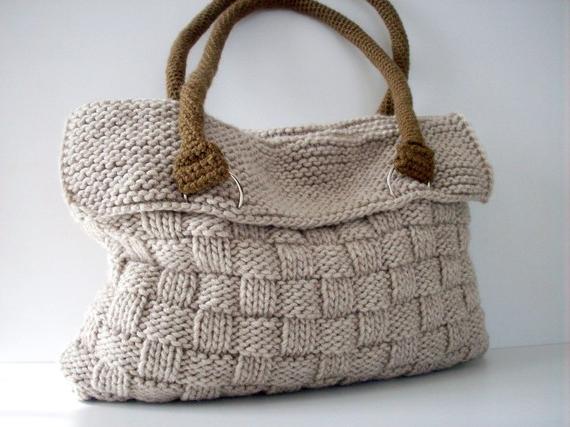 Wait until the mixture has cooled down. As soon as it becomes room temperature, you can lower the thing into it. You should get a cloudy liquid, the density of which will be slightly higher than that of plain water. The clothes are rinsed in the resulting liquid or soaked for several minutes. This time will be quite enough for all the fibers to be well saturated with starch. It is not necessary to squeeze the clothes strongly. Starch makes the fabric stiff. In order to iron it, you will have to make more effort.
Wait until the mixture has cooled down. As soon as it becomes room temperature, you can lower the thing into it. You should get a cloudy liquid, the density of which will be slightly higher than that of plain water. The clothes are rinsed in the resulting liquid or soaked for several minutes. This time will be quite enough for all the fibers to be well saturated with starch. It is not necessary to squeeze the clothes strongly. Starch makes the fabric stiff. In order to iron it, you will have to make more effort.
This method is used to stiffen men's shirts, tablecloths, furniture covers, and lace. How to Starch Things Correctly? We'll have to use a little more powder already. Two teaspoons of starch per liter of water will be enough. The method for preparing the mixture is the same. First, the powder is diluted with cold water and then the hot liquid is added.
 The mixture is considered correct if it is translucent and has the consistency of liquid sour cream. Dry or slightly damp things are dipped in the solution for five minutes. It is better not to squeeze clothes. In order not to get ugly creases, you need to let the solution drain itself.
The mixture is considered correct if it is translucent and has the consistency of liquid sour cream. Dry or slightly damp things are dipped in the solution for five minutes. It is better not to squeeze clothes. In order not to get ugly creases, you need to let the solution drain itself.
This option is most often applied to various decorative elements, as well as petticoats of wedding dresses.For cuffs and collars, this processing option is used less often. How to starch a thing with potato starch? Additionally, you will have to use borax. A teaspoon of this substance is diluted in a glass of hot boiled water. Two tablespoons of starch are diluted to a uniform consistency in a liter of cold water. Additionally, another liter of water is heated to a boil and poured into the starch solution. Borax is added last to the mixture. All ingredients are mixed and left for two hours.
 The solution for hard starching should have a thick consistency. If it is necessary to give rigidity to dimensional things, the amount of ingredients increases proportionally. There should be as much liquid as necessary to completely cover the weeh. The fabric is soaked in the solution for 20-30 minutes. Then the thing is taken out, and the mixture is allowed to drain.
The solution for hard starching should have a thick consistency. If it is necessary to give rigidity to dimensional things, the amount of ingredients increases proportionally. There should be as much liquid as necessary to completely cover the weeh. The fabric is soaked in the solution for 20-30 minutes. Then the thing is taken out, and the mixture is allowed to drain.
How to starch large items: bedding or curtains?
Starch helps bed linen not to wrinkle and stay clean for a long time. So that sheets and duvet covers are not too hard, they should be treated with a weak solution prepared in a ratio of 1 tsp. for 1 liter of water.
It is necessary to calculate how much liquid is needed for soaking, based on this, prepare a starch paste. For 10 liters, you need 10 tsp. starch, stir it in a glass of water and pour this mixture into boiling water. When it cools down, the laundry is soaked in it for 10 minutes. When drying, sheets and duvet covers must be straightened well, otherwise it will be difficult to iron them. Curtains are easy to starch in the same proportions. They are hung on the windows wet so that the fabric straightens under its own weight.
Video
Items that you use frequently and those that you wear regularly tend to wear out gradually, which means they lose their original fresh look. What needs to be done to "revive" or leave a new one for a long time, for example, a linen tablecloth or your favorite cambric blouse? Starching products can be one of the proven methods. Things processed in this way become stronger and fresher. Therefore, we advise you to read the tips on how to starch the fabric and follow the instructions described in this article.
Methods and types of product processing
If you are wondering how to starch the fabric, first decide how hard you want the finished product to be. Depending on the structure, thickness and quality of matter, it is necessary to determine the concentration and composition of a chemical solution for processing things. At the same time, the following materials are usually not processed: costume fabric, woolen items,
There are several levels of starch severity:
1. Soft. It is used for products made of light chiffon, thin jersey.
2. Average. Suitable for napkins, blouses, men's shirts.
3. Rigid. Used for collars, cuffs and knitted decorative bulky items, such as napkins-vases.
There are also several ways:
1. Traditional, time-tested method using potato starch.
2. Special chemical compounds (liquids and powders), which are added to water during hand wash at the last rinse or into an automatic washing machine when adding detergents and rinses.
3. All kinds of nebulizers and sprays. The most convenient option of all, since it does not require special preparation of the solution, tissue and devices. Usually, airborne processing of products is carried out during ironing with an iron at an average temperature.

How to starch fabric
the traditional way: a step-by-step guide
It is better to use it for processing things in the usual way, but you can also use corn or wheat.
1. First of all, the product must be clean. Make sure that there are no stains on it, as after starching, all defects will be especially striking.
2.Prepare the solution by diluting the starch in cold water. Observe the following proportions:
- for thin fabrics - 5-10 grams (1 teaspoon) per 1 liter of water;
- for bed linen - 10-15 grams (1 tablespoon);
- for collars, bulky napkins - 20-25 grams (2 tablespoons).
3. Then pour some hot water into the prepared solution. After thorough mixing, the paste should be homogeneous, viscous and transparent. Lumps are not allowed. When a cloudy solution is obtained, it must be boiled for several minutes.
4. Water is added to the resulting paste in a ratio of 3: 1.
5. To starch the fabric, immerse the prepared soaking item in the solution so that it is completely immersed in it, and leave for 5 minutes.
6. Wring out the product and hang to dry. It is not recommended that things dry on heating devices, radiators and balconies, as it will be difficult to iron them later.
7. In order for the fabric to be well smoothed, do not overdry the product, it is better if it is slightly damp.
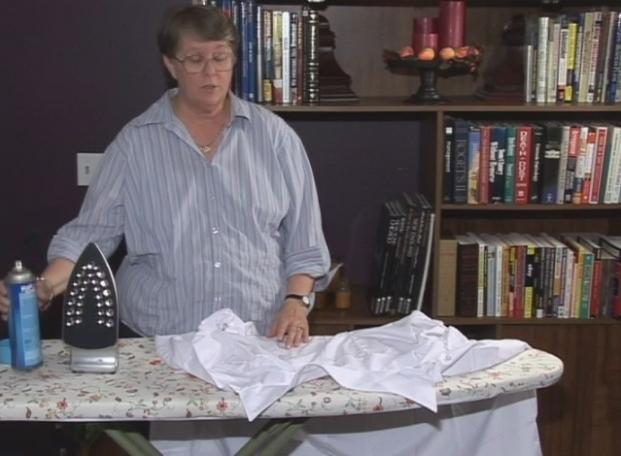
How to starch the fabric - the old proven way or the modern one - is up to you. The most important thing is that the result obtained is pleasing to the eye with its perfection.


